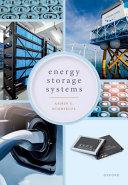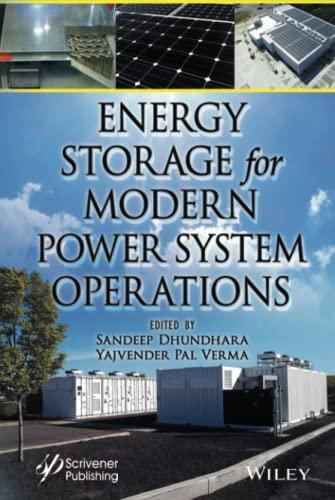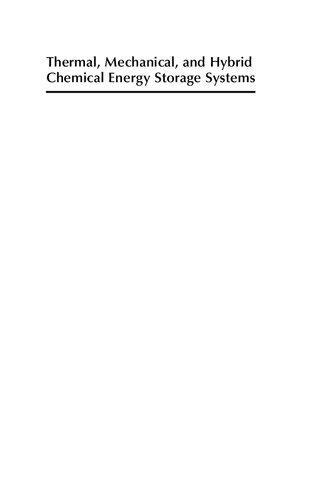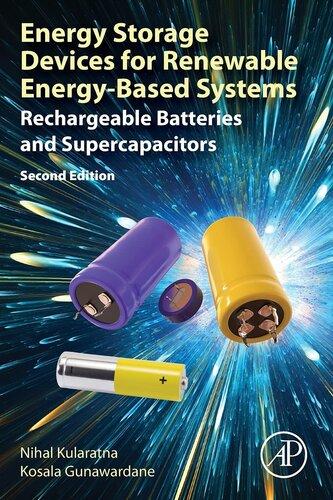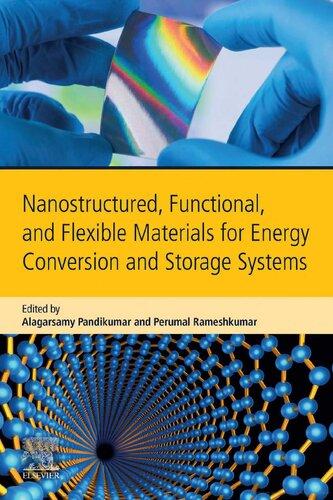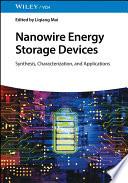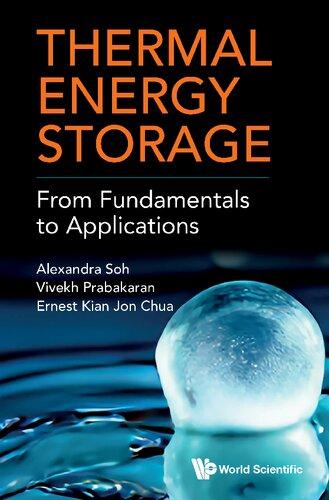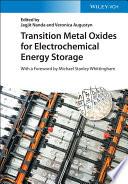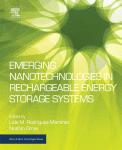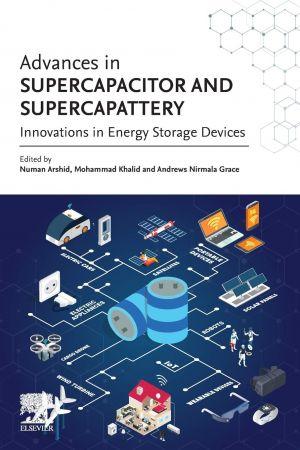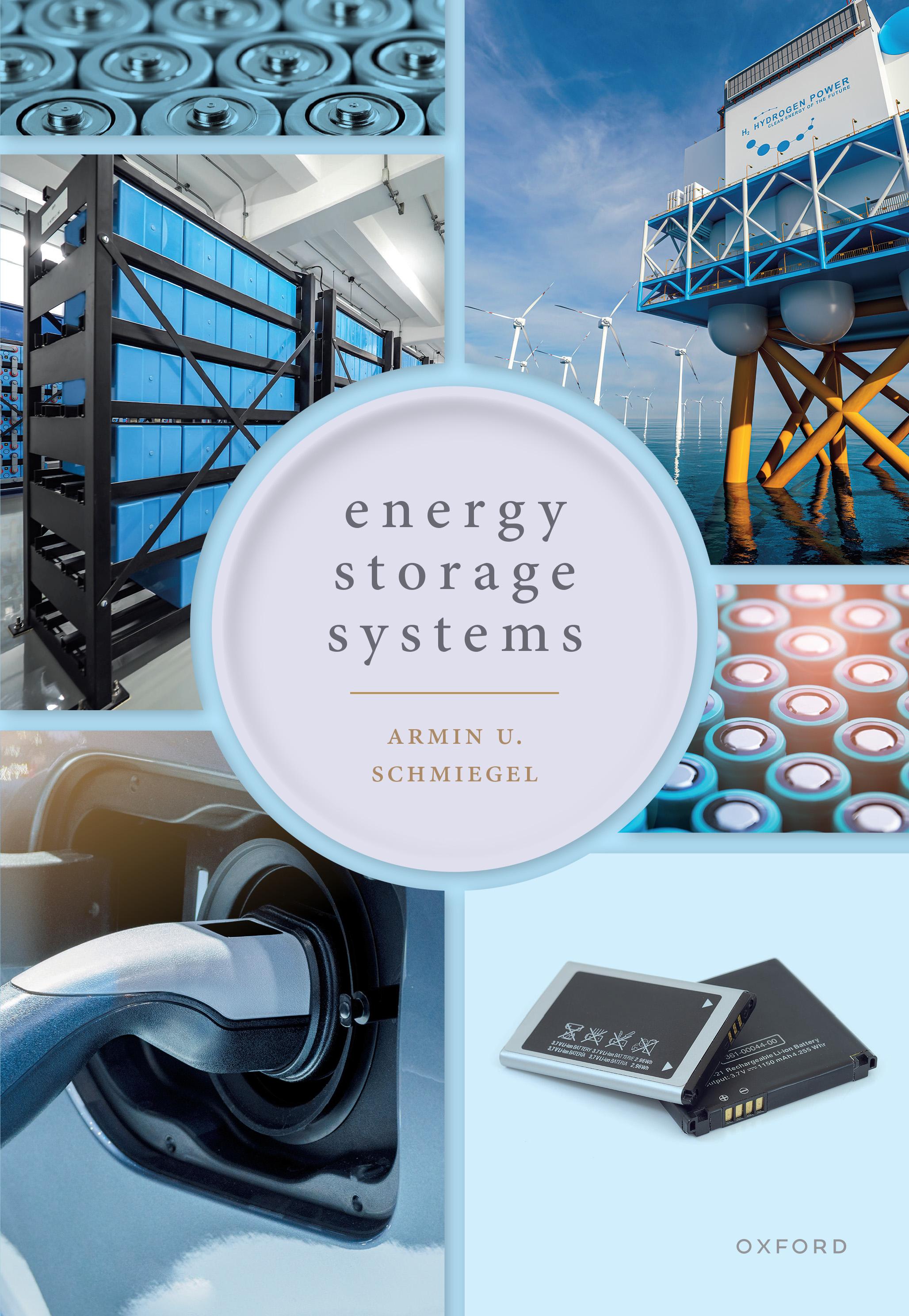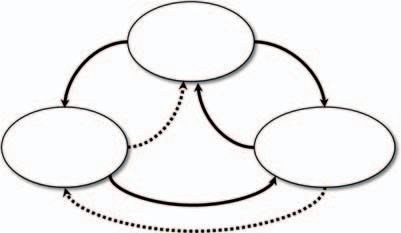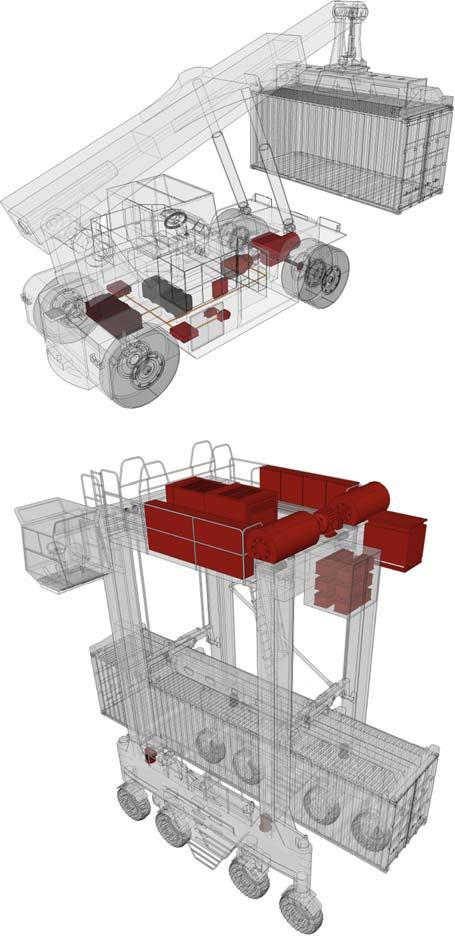Thepurposeofenergystorage systems
2.1 Introduction
Beforewetakeadeeperlookatthemathematicaldescriptionandmodellingofstorage systems,wefirstwanttoinvestigatehowandwherestorageisused.Therearealarge varietyofapplicationsforenergystoragesystems.Infact,thereishardlyanyareain ourliveswhereenergystorageisnotused.
WestartinSection 2.2 withadiscussionaboutthereasonstorageisneededatall, anddescribethebasicapplicationsofstorage.Sinceenergystorageiscloselyrelated totheconceptofenergyandpower,weaddressthisaspect.Wealsodescribehow storagesystemscanbecharacterizedbytwoquantities:powerandenergydemand.
InSection 2.3 weinvestigatethedifferentapplicationsofstoragesystems.Westart withverysmallsystems,whichareusedmainlyineverydaymobileobjects.Wethen takealookatmobilityapplicationssuchaselectrifiedorhybridizedvehiclesandmobile workingmachines.
Inmobileapplications,energyisusuallystoredbeforethejourneybeginssothat thisenergycanbeusedduringthetrip.Theenergystorageisusedasafoodrationfor thejourney.InSection 2.3.3,welookatanotherlargeclassofapplications:stationary storagesystems.Theiruseiscloselylinkedtoourelectricitygridanditscharacteristics. Therefore,atthispointweexplainthestructureofthepowergridandthevarious waysinwhichenergystoragesystemscanbeusedinit.
2.2 Whatstorageisusedfor
Storingthingsisacommonprincipleinnature.Plantsstorewatertosurvivedry periods.Squirrelsgatherfoodtofallbackoninwinter.Otheranimalsdonotstore theirprovisionsinhiddenplaces,butcarrythemaswinterfatdirectlyintheirbodies. Thisensuresthattheirbodiescansurviveduringtimesofseasonalfoodshortage.
Wehumans‘store’moneythatwedon’tneednow,tospendlater.Wefillupthe tankofourcarbeforewestartalongtripand,unfortunately,wealsoputonsome bodyfatwhenweeattoomuch,becauseourmetabolismwantstomakesurethat westillhaveenoughenergyreservesinbadtimes.Whatalltheseexampleshavein commonisthattheprocessofstoringisalwayslinkedtothegoalofusingasurplus
Thepurposeofenergystoragesystems
ofsomethinginthepresenttocoverashortageinthefuture.Withstorage,therefore, onecanseparateproductionandconsumptionintime,butspatialseparationisalso possible:ahealthybreakfastathomecoverstheenergydemandwhilewework.Thecar isfilledupatthegasstationandconsumestheenergyofthefuelwhiledrivingacross thecountry.
Thereisalsoathirdapplication.Ifthechosenmethodoftransportdoesnotallow thetotalamountofsomethingtobetransportedimmediatelyandcompletely,then thedifferencecanfirstbestoredtemporarilysothattheactualtransportprocesscan takeplaceinseveralsteps.
2.2.1 Energyandpower
Inthisbookwelookatstoragesystemsthataredesignedtostoreenergy.Firstofall, energyisaphysicalquantitythatprovidesinformationabouthowmuchpowercanbe extractedoraddedintoaphysicalsystem.Considerasystemwhichhastheenergy content E0 at t =0s.Duringaperiodfrom t =0s until t = T s,powerisaddedand extractedfromthissystem.Thetimeseriesdescribingthisprocessis P (t).Adding time t = T s,theamountofenergyofthesystemcanbecalculatedby:
Exercise2.1 Consideramobilephonewhichalreadyhasastateofchargeof 24Wh.The mobileischargedduringthenight(8h)with 15W anddischargedovertheworkingday (12h)with 10W.Whatistheenergycontentofthemobilebattery?
Solution: Usingeqn(2.1)theenergycontentequals:
E(T )=24Wh+8h 15W 12h 10W=24Wh+120Wh 120Wh=24Wh
Therearethreegroupsofenergythatwewillencounteragainandagain:electricalenergy,mechanicalenergy,andthermalenergy.InTab. 2.1 belowwehavelisted descriptionsofeachofthese.
However,thedefinitionofenergypresentedineqn(2.1)showsthatinprinciple everyphysicalsystemtowhichanenergycanbeassignedisalsoakindofenergy storage.Forthistobethecase,wejustneedtobeabletoaddenergytothesystem atsometimeandsubtractenergyatadifferenttime.Infact,notallphysicalsystems canalsoserveasanenergystorage.Thisisbecauseitisalsonecessaryfortheenergy tobestoredforasufficientlylongperiod,asthefollowingexampleillustrates.
Whatstorageisusedfor 5
Table2.1 Differenttypesofenergydiscussedandusedinthisbook,includingtheirdefinitions.
Potentialenergy Epot = mg∆h
Kineticenergy Ekin = 1 2 mv2
Rotationalenergy Erot = 1 2 Jω2
Theenergyneededtoliftamass m from height h1 to h2. g isthegravitationalacceleration,whichdependsonthelocation. ∆h = h2 h1 istheheightdifference.
Theenergystoredinamass m,havinga velocityof v
Theenergystoredinarotatingbody. J isthemomentofinertia,whichreflectsthe massdistributionaroundtherotatingaxis. ω istheangularvelocityoftherotating body.
Electricalenergy Eel = UIt
Energyofcapacitor EC = 1 2 CU 2
Energyofaninductance EL = 1 2 LI2
Theenergyneededtoprovideacurrent flow I onagivenvoltagelevel U overa timeperiod t
Theelectricalenergystoredinacapacitor,withthecapacitance C andthevoltage levelof U .
Thetotalelectricalenergystoredinaninductancewiththeinductivityof L,whilea currentof I flowsthroughtheinductance.
Exercise2.2 Wewanttostore 3Wh intheformofkineticenergyinanobjecthavinga massof 12kg.Wewanttoextractthestoredenergyafteroneday.Whatdistancehasthe objecttravelledinthistime?
Solution: Thekineticenergyisgivenby
Theobjectthereforehasavelocityof
Thelongerthisenergyisstoredintheobject,thelongertheobjectwillmoveat 151.2 km h . Iftheenergyistoberetrievedafteroneday,theobjecthasalreadytravelledadistanceof 3,628 8km.Thus,translationalenergyismoresuitableforstoringenergyoverashorttime.
2.2.2 Efficiency:Thecostoftransformation
AsExercise 2.2 shows,noteveryformofenergyisequallysuitableforeverystorage application.Hence,theremaybeaneedtotransferenergyfromonetypeofenergy intoanother,moresuitableone.Inthisbookthemaintypesofenergyare:mechanical energy,beitintheformofkineticenergy,rotationenergy,orpotentialenergy;electricalenergy—thatis,currentandvoltage;andthermalenergy.Thesedifferentforms ofenergycanbeconvertedintoeachother(Fig. 2.1).
Noteverytypeofenergycanbetransformedwellintoanothertypeofenergy. Electricalandmechanicalenergy,forexample,canbetransformedintoeachother
Fig.2.1 Storagesystemsdealwiththestorageofmechanical,electrical,andthermalenergy. Theseenergiescanbetransformedintoeachother.Sometransformationsarequiteefficient, i.e.onlyasmallpartofthetransferredenergyislost.Thesolidlinesmarktheseefficient transformations.Thedottedlinesmarktransformationswhichshowgreaterenergylosses; thesearenotcommonlyusedinenergystoragesystemapplications.
verywell,becausethemovementofamagnetcangenerateanelectricalcurrentvia theLorentzforce.Withthehelpofanelectricmotor,movementcanbegenerated fromanelectriccurrentandelectriccurrentfromamovement,ifamagneticfieldis available.InSection 5.2.6 wewilllookatthisinmoredetailanddescribethenecessary technicalcomponents.
Electricalenergycanalsobeeasilytransformedintothermalenergy.Thermalenergyarisesbyitself,becauseeveryelectriccurrentgeneratesheatviatheresistanceof aconductor.
Fortheconversionofthermalenergyintoelectricalenergy,thethermoelectriceffect canbeused,inwhichtheheatingofaconductorcausescurrenttoflow.However, thiseffectisverysmall,sotheconversionusuallytakesplaceviatheintermediate stepofconvertingthermalenergyintomechanicalenergy.Anexampleofthisisthe combustionofcoalorgastogenerateelectricalenergy,Inthiscase,theheatcauses watertoevaporateandthissteamisusedtodriveaturbine.Therotationofthe turbinedrivesagenerator,whichproduceselectricalpower.
Thequalityofthesevariousconversionsisdescribedbytheefficiency.Theefficiency istheratiobetweentheenergy Ein,whichwewanttoconvertortransfer,andthe energythatisactuallyavailableafterwards, Eout:
InSection 3.2.1 wewilllookattheefficiency η anditsmathematicaldefinitionin moredetail.Theefficiency η isanimportantelementthatweneedfordescribingand designingenergystoragesystems.
Inordertodescribeanenergystoragesystem,wemustthereforebeclearabout whichtypesofenergyoccurandhowtheyaretransferredintoeachother.Theefficiency isanimportantcriterionfordecidingwhichtypesaretherightchoice.Inpractice,the applicationalreadydetermineswhichtypesofenergyarepresent.Ifwelookatavehicle withanelectricorhybriddrive,thetypesofenergyusedarealreadydetermined:the combustionengineisusedtoconvertheatintomechanicalenergy.Themechanical energyisusedtorotatetheaxleandthussetthecarinmotion,whichcorrespondsto atransformationofthermalenergyintomechanicalenergy.
However,theinternalcombustionenginecanalsodrivetheaxleofagenerator, whichusesthemovementtoproduceelectricitythatchargesabatteryordrivesan electricmotor.Inthiscase,thermalenergyisthustransformedintokineticenergy, thenintoelectricalenergy,andthenintokineticenergy.
Ifthecombustionengineisnotused,butonlythebatteryandtheelectricmotor, storedelectricalenergyisconvertedintokineticenergy.
Forthedesignofthevehicle’ssystemcomponents,thequestionnowarisesasto whichlossesoccurduringtheseconversions.Theseareinfluencedbythetechnical realization.
Exercise2.3 Wewanttodesignapowertrainofanhybridvehicle.Twodifferentsetsof components, A,B,areavailableforthecombustionengine,theelectricmotor,andthebattery. Thecomponentshavedifferentefficiencies.
InTab. 2.2 theefficienciesareshown.Themostefficientsystemconfigurationisnowto bechosenforthedesign.Itshouldbetakenintoaccountthattheshareofutilizationofthe combustionengineandtheelectricdrivecanbedifferent.Forthispurpose,theweighting factor α shallbeused,whosevaluerangeliesbetween 0 and 1 α =1 correspondstothesole useofthecombustionengine.If α =0,thevehicleisdrivenexclusivelyelectrically.
Solution: Thetotalefficiencyistheweightedsumoftheindividualefficiencies: η
where i =(A,B) istherespectiveconfiguration.InFig. 2.2 theefficiencycurvesforthetwo configurationswithdifferentweightsisshown.Configuration A isbetterthanconfiguration B at α =1.Thisisnotsurprising,becauseathigh α theuseofthecombustionengine predominatesandthecombustionengine A ismoreefficientthanengine B.At α =0, however, B isbetter:heretheuseoftheelectricdrivetraindominates,andthisismore efficientat B than A.
Table2.2 Efficienciesoftheavailable vehiclecomponents.
SystemcomponentEfficiency
Combustionengine Aηcomb =43%
Combustionengine Bηcomb =39%
Electricdrive A ηdrive =74%
Electricdrive B ηdrive =81%
Fig.2.2 Efficiencyoftheconfiguration A and B asafunctionof α
2.2.3 Theinfluenceofcharginganddischargingpower
WelearnfromExercise 2.3 thattheusageofthevehiclehasanimportantinfluenceon itsdesignconsideration.Ifitisprimarilydrivenbythecombustionengine,adifferent configurationisbetterthanforthecasewherethevehiclecanbeoperatedcompletely electrically.Inavehiclethathasintegratedbothsystemcomponents,forexamplean electricpowertrainandaninternalcombustionengine,twovariablesdeterminehow muchdrivingisdoneelectricallyandhowmuchwithaninternalcombustionengine: theenergycontentofthevehiclebatteryanditscharginganddischargingcapacity.
Theenergycontentdealswiththequestionofhowmuchenergyisneededbetween twochargingprocesses.Thisis,ofcourse,followedbythequestionsofvolume,weight, andcost.Sincestoragealwaysbringsadditionaleffortandcosts,wealwaystrytomake thecapacityonlyaslargeasisreallyneeded.Inourexample,thesizeofthebattery influencestheproportionofjourneysmadewiththeelectricmotororthecombustion engine.Ifthebatteryisempty,thedriverhastorelyondrivingwiththecombustion engine.Alargebatteryisthereforeassociatedwithasmallvaluefor α.Asmallbattery meansthat α becomesone.
Thecharginganddischargingpowerindicateshowmuchenergycanbeaddedtoor removedfromthestorageinrelationtoaparticularamountoftime.Thisparameter alsohasaninfluenceonthequestionofhowlargetheshareofuseofthecombustion engineandtheelectricdriveis:ifthebatteryisdesignedinsuchawaythatitcan onlybeoperatedwithlowdischargingpower,thecombustionenginemustbeserved asasupportwhenhigheraccelerationsarerequired.Wheneverthedriver‘stepsonthe gas’,thecombustionenginewillthenprovideadditionalpowertosupporttheelectric motor.Thisofcoursehasaneffecton α,whosevaluewouldshifttowardsone.But thereisanothereffect.Anelectricmotorworksbothasamotorandasagenerator— thatis,itisabletochargethebatterybyconvertingkineticenergyintoelectrical energy.Butifthebattery’smaximumchargingpowerislimited,notallofthepower thatcouldbeservedtochargethebatteryduringabrakingmanoeuvrecanbeused. Dependingonthedesignofthevehicle,theportionthatcannotbestoredisconverted intofrictionandheatbyamechanicalbrakeorconvertedintoheatwiththehelpofa brakeresistor.Thechargingpowerthereforealsohasaninfluenceonthevalueof α Ifthechargingpowerissmall,lessbrakingenergyistransferredbackintothebattery andhastobeburned.Thisreducestheamountofpureelectricdrivingandshiftsthe valueof α towardsone.
Storagesystemsandtheirapplicationscanthereforebedescribedbythreeaspects: whichformsofenergyoccurandarestored?Howlargeistheenergycontentthatthe storagesystemmustprovidetomeettheapplication’srequirement?Whatcharging anddischargingpowerisrequiredfortheapplication?Inthefollowingsection,we willusethesethreequestionstocharacterizedifferentapplicationsofenergystorage systems.
2.3 Applicationsofenergystoragesystems
Energystoragesystemshaveaverywiderangeofapplications.Inthissectionwe lookatsomeoftheseanddescribethemusingthethreecriteriadescribedinSection 2.2:energycontent,charginganddischargingpower,andwhichtypesofenergyare
used.Westartwithmobileapplications,thenlookattheelectrificationofvehicles andmobilemachinery.Bothfieldsofapplicationarecharacterizedbythefactthat theyaremobileapplications—thatis,thestoragesystemismoved.Thenwelook attwostationaryapplications.Inthesecases,thestoragesystemisnotmovedand canthereforebesignificantlylarger.Thefirstareawedealwithisbuildings,bothin connectionwithapowergridandasacomponentofaself-sufficientenergysupply. Thelastareadealswiththepossibilityofusingenergystoragetosupportthepower grid.
2.3.1 Mobileapplications
Inthissectionwelookattheuseofstorageformobileapplications,andmorespecificallyconsumerelectronics,tools,andgardeningequipment.Attheendofthetwentieth century,theenergyandpowerdensitiesofprimaryandsecondaryenergystoragedevicesbecamesohighthatitwaspossibletoequipdevicesthatpreviouslyhadtobe connectedtoapowergridwithbatteriesaswell.Toolsthatcouldpreviouslybeserved withacablehavenowbecomecordless.Cordlessdrillsandcordlessscrewdriversare examplesofthis.
Atthesametime,themarketformobileconsumerelectronicsdeveloped.Laptops andmobileswereconstantlydevelopedfurtherandbecametechnologydriversforthe increaseofenergyandpowerdensityofenergystoragedevices.Theusecaseisalways aspatialandtemporalshiftintheusageofenergy.Wechargeourmobilesovernight athometobereachableanywhere,anytime,duringthedayviaemail,phone,online messenger,tobeabletowatchkittyvideosanytimeandanywhere,ortobeableto listentoourfavouritesongfromourrecordcollectionorplaylist.Thestorageinthe laptopischargedinthelibraryordockingstationtobeservedinalectureortransit fromoneworkplacetoanother.Thankstocordlesstechnology,itisnowpossibleto servetheelectricscrewdriverinplaceswithoutapowersocket.Andanyonewhohas tomowalawnwithlotsoftreesandshrubsplustablesandpaddlingpoolsappreciates nothavingtofusswithacordorconstantlyrefillthefuel.
Ifwewanttodevelopanenergystoragesystemforamobiledevice,wehavetofind asolutionfortheconflictingproductrequirementsofportability,priceandoperating time,anddurability.Thesmallertheenergystoragesystem,thehighertheportability ofthedevice.Volumeandweightincreaseiftheenergycontentincreases.Anincrease intheavailablepoweralsoincreasesthevolumeandweight.Althoughthetechnical reasonsaredifferent,thesameappliestotheprice.Themoreenergyorpoweristobe available,thehighertheprice.
Operatingtimeandservicelifeareinfluencedbythechoiceofstoragetechnology. Butwiththesamestoragetechnology,theinfluencingvariablesareessentiallyreduced tothecapacityoftheenergystoragesystem.Thelargerthecapacity,thelongerthe unitcanbeoperatedforbeforeitneedstoberecharged.Thisalsoextendstheservice life,asittakeslongerforausertobecomeawareofanage-relatedreductioninstorage capacity.Buttheincreaseinstoragecapacitygoeshandinhandwithanincreasein costandvolume.Thismeansthatwehavetwocontradictoryrequirementsthatmust beweighedagainsteachotherappropriately.
Fig.2.3 Energyandpowerrequirementsofvariousmobileapplications.
Thediversityofusecasesisalsoreflectedintherequirementsforenergycontent andpowerdemand.InFig. 2.3,theseareshownfortheapplicationsmentionedabove. Inthisfigurethepowerandtheenergydemandareshownforthedifferentapplications. Notethattheaxisisonalogarithmicscale:thisallowsabettercomparisonbetween applicationswherethedifferenceinenergyandpowerdemandismorethanoneorder ofmagnitude.
Theapplicationswiththehighestpowerrequirementsarethemobiletools.Cordless screwdriversanddrillsrequirepowerrangingfrom 750W to 2000W.However,this powerisnotappliedpermanently.Ascrewdriveronlyneedsthepowerforashorttime, duringtheinsertionorremovalofthescrew.Thisprocesscanbebetween2and 30s dependingonthelengthofthescrew,thenatureofthepartbeingassembled,andthe skilloftheuser.
Exercise2.4 Acordlessscrewdriverhasastorageof 5 4Wh.Forscrewingorunscrewing screws,apowerof 100W isrequiredfor 2s.Inordertoassembleawallshelf, 25 screwsneed tobescrewed.Howmanywallshelvescanbeassembledwiththescrewdriverifnomistakes aremade?
Solution: Theenergycontentofascrewdrivingoperationis
100W · 2s=200Ws= 200Ws1h 3,600s =0 05Wh
Lawn mower
Cordless screwdriver
Cordless drill
Thus,withoutrecharging,thefullychargedscrewdrivercandriveapproximately N = 5 4Wh 0 05Wh =108 screws.Thiswouldbeenoughforaboutfourwallshelvesinarow.
Inthecaseofthedrillandthescrewdriver,thepowerrequirementnaturallydependsverymuchonthespecificapplication.Ittakesdifferentamountsoftimeto screwinascrewthatis10cmlong,dependingonwhetherthematerialissoftorhard. Hence,thepowerrequirementisdifferent.However,itisessentialinthisapplication thattheloadisnotpermanentlyapplied.Bothdevicesaredesignedforworkwhichis regularlyinterrupted,allowingtheelectronicsandbatteriestocooldown.
Forthebattery-poweredlawnmower,thepowerrangeoftheenergystoragesystem isbetween20and 1,600W andtheavailablestorageis20–160Wh.Thelawnmower isanapplicationhavingacontinuousoperationwithasteadydischarge.Thepower requirementdependsontheenvironmentalconditions.Wet,tallgrassdemandsmore powerfromthelawnmowerthanshort,drygrass.Thisisalsoareasonwhyrobotic lawnmowersmowthelawneverydayandnotjustonceaweek.Thepeakperformance ofalownmowerisveryrarelyrequested.
Theenergyandpowerrangecoveredbylaptopbatteriesoverlapswiththelower rangeofthelawnmower.Thisisnotsurprising,becauseoftennotonlythesamestorage technologyisused,butalsothesamecomponents:lithiumionbatteriesusinground cellsofthe16850type(seeSection 8.4).Theelectronicsmarketreliesheavilyontheuse ofcomponentsthatareinstalledinhighquantitiesindifferentdevices,whichmeans thattheenergystoragesystemsfordifferenttypesoflaptopsareverysimilartoeach otherintheirtechnicalproperties.Thesamecanbeobservedwithmobilephones. Thedatasheetsoflaptopbatteriesshowthesamevoltagerangeandthesameelectro chemistry.Theadvantageisthatthecostsforanenergystoragesystemarereduced duetothehighernumberofunitsandlowerproductdiversity.
Forthelaptop,theenergycontentisbetween 45Wh and 75Wh.Here,too,wehave tofindacompromisebetweenvolume,weight,operatingtime,andprice.Theoperating timedependsontheuseofthelaptop.PlayingaCDorcontinuouslydownloadingfiles requiresabout 18W.Ifthelaptopisusedfor3Dgamingornumericalsimulations, thepowerdemandvariesfrom 21W to 30W (MahesriandVardhan,2004).
Thepictureformobilephonesissimilartothatforlaptops.However,theenergy contentandpowerdemandisconsiderablylower.Theavailablecapacityis 4Wh to 13Wh.Thepowerdemandis 0.4W to 1W (Carroll etal.,2010; Ardito etal.,2013; Tawalbeh etal.,2016).
Mobilephonesareatleastonstandbyallofthetime,toassurethattheycanreceive callsandtheusercanbeinformedaboutthelatestinformationfromtheinternetatin anytimeandinanyplace.Thismeansthattheenergystoragesystemiscontinuously discharged.Sincethesizeandvolumeofamobilephoneislimited,alotofdevelopment workhasbeenputintoreducingthepowerdemandandincreasingtheenergydensity ofthebattery.
Thepurposeofenergystoragesystems
Energystorageapplicationscanbedividedintotwocategories:energyapplications andpowerapplications.Themobilephoneandthelaptopareenergyapplications— thatis,theirstorageisservedtoprovideenergyoveralongperiodoftime.The screwdriverisapowerapplication:itsstorageisusedtocalluphighpowerforashort time.Therefore,itdoesnotcontinuouslymakelow-powerrequests,butinsteadhas intermittenthighpowerdemands.
The2DdivisionofapplicationsintoenergydemandandpowerdemandinFig. 2.3 unfortunatelydoesnotallowthesetwoapplicationstobeeasilydistinguishedbetween. Characterizationisnotsosimpleatfirst.ThisiswheretheE-Ratehelpsusbyallowing ustodifferentiatebetweenenergyapplicationsandpowerapplications.
TheE-Rateistheratioofthepowerdemandandtheavailablestoragecapacityof anapplication.TheseratesareshowninFig. 2.4 below.E-Ratesaboveonearereferred toaspowerapplications;forexample,heretheenergystoragesystemservestoprovide power.E-Ratesbelowone,ontheotherhand,arereferredtoasenergyapplications; forexample,herethestorageservestoprovideasmuchenergyaspossibleoveralong periodoftime.
TheE-RatesshowninFig. 2.4 confirmthepreviousobservations.Mobilephones andlaptopsarebasicallyenergyapplications.Thepowerdemandisreducedsothat theenergystoragesystemcanprovideitsenergyoveralongperiodoftime.Cordless screwdriversandcordlessdrillsarepowerapplications.Highpowerisrequiredover ashortperiodoftimeinrelationtotheenergycontent.Lawnmowersrepresentan applicationthatliesbetweenthesetwoareas.Therearelawnmowersthataredesigned forlowpoweroveralongperiodoftimeandthereareproductsthatcanalsoprovide peakpowerintermittently.WhatissurprisinghereistherangeofvaluesoftheERates.Shouldonewishtopurchasealawnmower,Fig.2.4teachesusthatwemust lookverycarefullyatwhichE-Ratethelawnmowerprovides.Otherwise,wemaybuy itforapowerapplication,butfindthatinsteadwehaveanenergyapplication.Inthis case,wewillneedtoplanformanychargingbreakswhilemowingthelawn.
2.3.2 E-Mobilityandmobilemachinery
Inthissectionwelookattheapplicationofenergystoragesystemsforvehiclesand mobilemachines.Similartomobiledevices,inthesesystemsenergyischargedinto storagetobeconsumedatanotherlocation.Mobilityisfocusedonusingtheenergy togetfromoneplacetoanother.Withmobilemachines,thereisalsotheaspectof work.Mobilemachinesnotonlyservetogetfromoneplacetoanother,butalsoneed todoajobonthespot.
Westartourinvestigationswithvehicleswhoseapplicationistotransportpeople orgoods.
Therearevariouspossibilitiesforpoweringavehicle.Thesearebasicallyderived fromtheformsofenergyandtheirtransmissionthatwehavepresentedinFig. 2.1:to driveavehicle,electricalenergyorthermalenergyistransformedintokineticenergy. Ifwewanttouseelectricalenergy,weuseanelectricmotorthatdrawsitsenergy fromabatteryorafuelcell,forexample.Ifwewanttousethermalenergy,we useacombustionengine.Inbothcases,theenergyistransferredtoapowertrain.
Fig.2.4 E-Ratesfordifferentmobileapplications.
Therearefourwaystocombinethesetechnologies.InFig. 2.5,wehaveillustrated these.Historically,A),theconversionofthermalenergyintokineticenergywasthe firstformofmobility.Originally,thiswasrealizedbysteamengines.Today,internal combustionenginespoweredbyfossilfuelareacommonoccurrence.Thedisadvantage ofthistechnologyisthatkineticenergycannotbeconvertedbackintothermalenergy. Theenergyflowalwaysgoesinonedirectiononly.Ifthespeedistobereduced,then brakesmustbeapplied.Thisalsoreleasesthermalenergy,butthisenergyislostand isnotreturnedtothefueltank.
InapproachB),anelectricpowertrainisused.Thisconsistsofanelectricalenergysource,anenergystoragesystem,andanelectricmotor.Theadvantageofthis approachisthatmechanicalenergycanbeconvertedbackintoelectricalenergy.Ifa storageunitisavailable,itisdischargedduringtheaccelerationphaseandcharged duringthebrakingphase.Thisprocessiscalledrecuperation.
Unfortunately,electricalenergystoragesystemshavenotyetreachedtheenergy densityoffossilfuels.Petrolhasanenergydensityof 8 8kWh/l,whereasalithiumion batteryhasanenergydensityof 0 4kWh/l.However,theefficienciesarealsodifferent. Theconversionofpetrolintokineticenergyviaaninternalcombustionenginehasan averagedefficiencyofabout η =30%.Apurelyelectricpowertrain,ontheotherhand, hasanaveragedefficiencyof η =85%.
Fig.2.5 Overviewofdifferentpowertrainconceptsofvehicles.A)correspondstothedrive withtheaidofaninternalcombustionengine.B)isafullelectricdrive.C)andD)representhybriddriveconcepts.InC)bothdrivescanpowerthevehicleseparately.InD)the combustionenginegenerateselectricalenergy,whichisservedbyanelectricmotorforthe drive.
Exercise2.5 Thestorageofavehicleistobedesignedsothatitcanconvert κ =400kWh kineticenergy.Howmuchvolumeisrequiredfortheenergystoragesystemifpetrolwith anenergydensityof ρV =8 8kWh/l oralithiumionbatterywithanenergydensityof ρV =0 4kWh/l isused?Theefficiencyofthecombustionengineis η =30%,andthatofthe electricdriveis η =85%.Recuperation,i.e.thepossibilityofstoringkineticenergyagain,is nottobeconsideredinthistask.
Solution: Thevolumeisgivenbytheformula
= κ η · ρV
Thetargetcapacity κ iscorrectedbytheefficiency.Asaresult,ifthedriveislessefficient, thestoragemustbelarger.
Ifpetrolisservedastheenergysource,weneedavolumeof:
V = 400kWh 30% · 8 8kWh/l =151l.
Inthecaseofalithiumionbattery,thevolumeis:
V = 400kWh 85% 0.4kWh/l =1,176l.
Thelithiumionbatteryneeds10timesasmuchvolumeforthesameenergycontent.
Butbecareful!Incontrasttotheinternalcombustionengine,alithiumionbatterycan storebrakingenergy,i.e.therangeofthevehiclewouldbeconsiderablygreater,asthe storageunitwouldonlyhavetocompensateforthebrakingandfrictionlossesthatoccur whiledriving.
ThecalculationinExercise 2.5 showsthattheenergystoragesystemwithfossil fuelstakesupsignificantlylessvolumethananelectricalenergystoragesystem.For thisreason,mixedformshavealsobecomeestablishedinpractice.Thesewanttoensure alongrangebyusingthecombustionengine,butatthesametimeoffertheadvantage ofrecuperationbyintegratinganelectricdrive.ConceptC)inFig. 2.5 representsa hybriddriveinwhichbothelectricalenergyandthermalenergyareservedforthe drive.
InconceptD),incontrast,theinternalcombustionengineservestogenerateelectricalenergy.Thebasicideaisthatthecombustionengineisoperatedattheoptimal operatingpointsothattheefficiencyisimproved.Diesel-poweredlocomotiveswork withthisconcept.Recuperationisnotprovidedforinthisconcept,unlessthereisstill abatteryontheelectricpowertrain.
Whenconsideringtheenergyrequirementsofavehicle,itmustbetakeninto accountthatthedischargeisneededfortheaccelerationphase.Duringtravel,onthe otherhand,onlyfrictionneedstobecompensated.Ifitispossibletostorekinetic energyduringabrakingprocess,thiscanleadtoaconsiderableincreaseinrange.
Exercise2.6 Onevehiclehasaninternalcombustionengineandanotherhasafullelectric drive.Theelectricvehiclehasastoragecapacityof κ =40kWh.Thevehiclewiththe combustionenginehasatankwithacapacityof 30l.Thefuelusedispetrolwithanenergy densityof ρV =8 8kWh/l.Bothvehicleshavethesamemass, m =1,500kg
Thevehicleistoaccelerateto 50 km h withinoneminuteandthendrivestraightahead for10min,requiringanaveragepowerof 500W tocompensateforfrictionlosses.Thisis followedbyfullbraking,whichlastshalfaminute.
Howmanyofthesedrivingcyclescanbedrivenwiththecombustionengineandhowmany withtheelectricdrive?Forsimplicity,weassumethatthemassofthevehicleisindependent ofthefillinglevelofthetank.Furthermore,weassumethatrecuperationhasanefficiencyof ηEV =90%.Thecombustionenginehasanefficiencyof ηICE =30%.
Solution: Ataspeedof v =50 km h ,thekineticenergyis:
,699 1J=40 18Wh=0 0402kWh
Thepurposeofenergystoragesystems
Duringtravel,frictionlossesof Ploss =500W mustbecompensated.Theenergyrequired forthisisgivenby: Eloss = t=T t=0 Plossdt = Ploss · T =500W 10min =5,000Wmin=0.083kWh.
Sincetheinternalcombustionenginevehiclecannotrecoverenergyduringbraking,we candeterminethenumberofpossibledrivingcyclesbasedonthisdata.Theenergycontent ofthetankis:
Thenumberofdrivingcyclesthenresultsin:
N = κICE Ekin + Eloss = 79kWh 0 0402kWh+0 083kWh =641 23 ≈ 641
Inthecaseoftheelectricvehicle,energyisrecoveredduringthebrakingprocess.This energyis:
Erekub = Ekin ηEV =0.0402kWh 90%=0.036kWh.
Theenergydemandfor N cyclesis
EN = Ekin +(N 1) Ekin (1 ηEV)+ NEloss
Thenumberofcyclesisobtained(with EN = κEV)from:
N = κEV ηEVEkin (Ekin (1 ηEV )+ Eloss ) = 20kWh 90% 0.0402kWh (0.0402kWh 10%+0.083kWh) =459.249 ≈ 459.
Althoughtheelectricvehiclehasabout50%lessstoragecapacity,itsrangeisabout71%of therangeoftheinternalcombustionengine.
Thesizeoftheenergystorageandthecharginganddischargingcapacityvaries greatlydependingonthetypeofvehicle.InFig. 2.6 theenergycontentandpower levelareshownfordifferentvehicles.Thepeakpowerwasusedforthepowerdemand. Peakpowerreferstothemaximumpowerdraw.Note,thatthepeakpowercannotbe drawnpermanently.Thisisbecausethecomponentsofthestorageunitorthedrive trainarenotdesignedforacontinuousloadofthispowerrate.
AscanbeseeninFig. 2.6,thediagrambreaksdownintotwoareas.Belowapower of 5,000W areapplicationswithsmallorlightvehicles:roller,scooters,andbicycles withelectricauxiliarydrive.Abovethislimitarecars.
ThepowerandenergyrangeofeScooters,eBikes,andeRollersisinthesamerange asthatofthelawnmowerfromFig. 2.3.Thisisbecausethetechnicalcomponents
Fig.2.6 Energycontentsandpowerlevelofvehicleapplications.Incaseswherebothfossilandelectricalenergystoragewereused,theelectricalenergystoragewasalsoentered separately.
aresimilar.Forexample,thesametypeofbatterycellsareusedforthestoragetechnology.Thereasonforthisisthattherequirementsintermsofvolume,price,and weightarecomparable.
eScootersandeBikesaretypicallynotusedforlong-distancetravel.Thedriving time—ifnotrackingtoursareundertaken—isintherangeofminutesorhours.Strictly speaking,bothvehiclesarehybriddrivesystems.Whiletheydonotuseacombustion enginethatservesfossilfuels,theydousehumanmusclepower.
Thehighestpowerdemandoccurswhenavehicleisstartingup.Here,inaddition torollingfriction,staticfrictionmustalsobeovercomeandthemassofthevehicle andloadmustbeacceleratedtoatargetspeed.WitheScootersandeBikes,therider helpswiththeirmusclepower.Duringtheride,thestoredenergyonlyservestocompensateforfrictionlosses.Thedischargerateisconsiderablylowerandisadditionally compensatedbytheassistanceoftherider.Therefore,eScootersandeBikesaremore ofanenergyapplicationthanapowerapplication.
WithaneScooter,thesecondenergysourceisomitted.eScootersarenothybrid driveapplications.Here,theentirepowerisdrawnfromtheelectricstorageunit.As canbeseeninFig. 2.6,theenergycontentbutalsothepowerdemandofthesevehicles isgreaterthanthatofeBikes.
Aboveapowerof 10kW arethepassengercars.Apartfromvehiclespoweredby aninternalcombustionenginealone,therearefourcategoriesintowhichcarswith alternativedrivesaredivided:electricvehicle,mildhybrid,plug-inhybrid,andfull hybrid.
Thepurposeofenergystoragesystems
TheelectricvehiclecorrespondstoapproachB)inFig. 2.5.Anenergystorage systemstoreselectricalenergy,whichthensuppliesanelectricmotor.Asshownin Fig. 2.6,thedifferentpowerclassesofelectriccarscoverarelativelylargeenergyand powerdemand.Theuseofanelectricpowertrainwithanelectricstoragesystemallows recuperation—thatis,thereturnofkineticenergyintoelectricalenergyforbraking thevehicle.Thismechanismhasapositiveeffectontherangethatcanbeachieved bythesevehicles.
ThemildhybridrealizestheconceptC)inFig. 2.5.Thepowertraincanbedriven byboththecombustionengineandtheelectricstorage(Fig. 2.6:‘Mildhybrid(el. storage)’).Thestoragecapacityis 300Wh–1500Wh,whichislowcomparedtoan electricvehiclewithastoragecapacityof 10Wh–100kWh.However,theavailable powerof 10kW to 20kW isinthelowerpowerrangeofanelectricvehicle.Itistherefore apowerapplication.Thesmallstorageunitofthemildhybridservesforshort-term charginganddischarging.Here,theapplicationistosupportthecombustionengine whenstartingandtorecuperatekineticenergywhenbraking.
Likeallvehicleswithaninternalcombustionengine,mildhybridsalsocarryanother energystoragesystem:thetankfortheirfossilfuel.Thepowerandenergycontent ofthecombustionenginearealsoshowninFig. 2.6 (‘Mildhybrid(fossilstorage)’. Sinceinamildhybridthemajorityofthepropulsionpowerandenergyconsumption isprovidedbythecombustionengine,thestoragecapacityandthepowerthatcanbe calledupareintheupperrangeofthisfigure.
Plug-inandfullhybridsalsorealizeconceptC),butbothhaveahigherelectrical storagecapacityandelectricalpower.Theyareinasimilarpowerrangetothatofthe electricvehicle,at 100kW to 250kW.However,thestoragecapacityofafullhybridis significantlylower,with 1kWh to 2kWh.Thestorageofbothvehiclesislargeenough toallowpurelyelectricdriving.Duetothelargerstorage,thisoperationislongerfor aplug-inhybridthanforafullhybrid.Inbothtypesofvehicle,theelectricstorageis alsousedtoreducetheloadonthecombustionengineindrivingconditionsinwhich itisnotworkingefficiently.
Fig. 2.7 showstheE-Ratesinthemobilityapplicationarea.eScootersandeBikes areintheboundaryareabetweenenergyapplicationandpowerapplication.This cannotbeexplainedbythetypeofapplicationalone,becausegreaterpowerisonly neededwhenstartingup.Here,itismorethecostpressurethatcomesintoplay.The storageisdesignedtobesosmallthatitismoreofapowerapplication.
Inthecaseofcars,electricvehicles,mildhybrids,andplug-inhybridsallfallinto thecategoryofpowerapplication,ifoneconsiderstheelectricalstoragesystemalone. Thefossilfuelpowertrain,ontheotherhand,isconsideredanenergyapplication.Fossil fuelshaveahigherenergydensity—thatis,moreenergycanbetransportedinavehicle tank.Theeffectisthatthestoragetankislargerinrelationtotherequiredpower. Thiseffectisveryclearinthemildhybridandthefullhybridvehicle.Bothsystems arecharacterizedbyarelativelysmallbattery—thatis,thetankcanbedesignedto becorrespondinglylarger.Withtheplug-inhybrid,whichhasalargerbattery,the tankissomewhatsmaller,andtheE-Rateshiftsinthedirectionofpowerapplication.
Sofar,wehaveonlylookedatvehiclesthatareessentiallytransportingpeople. NoneofthevehiclesdescribedinFig. 2.7 areconsideredworkingmachines.Onlythe
Fig.2.7 E-Ratesfordifferentmobilityapplications.
transportofweeklyshoppingorholidayluggageisaworkingapplicationforthese vehicles.Furthermore,theyarenotdesignedforcontinuousoperation.Apassenger carisdesignedforaservicelifeof10to20years.Itisassumedthatthesevehiclesare simplystationarymostofthetime,andneithertheirstoragenorthedrivetrainare usedduringparking.Thisassumptioncanbeeasilyunderstood.Workingcommuters drivetoworkinthemorning,thenworkonsitewithoutusingthecar,andthendrive homeagain.Inthisexample,thecarisnotusedformorethanabouttwotofour hours.
Thesituationiscompletelydifferentwhenvehiclesareusedtoperformwork.Vehiclesandtheircomponentsareusedmoreintensivelyandcontinuously.Mobilemachinesalsodifferfromthemobilityapplicationsmentionedsofar,inthatthevehicles arenotonlyusedfortransportation,butalsoforperformingwork.InFig. 2.8,two examplesareshown.Oneisareachstackerandtheotherisastraddlecarrier.Both vehiclesareservedinportstotransportcontainersfromoneplacetoanother.Both vehicleshaveenginesthatareusedtomovethemandtheyhavecomponentsthatserve tolifttheloads.Duringtheliftingprocess,kineticenergyisconvertedintopotential energy.
Areachstackercanbasicallyusethesamedrivesfortraction—thatis,movement fromAtoB—asareusedinmobility.Aswithcars,however,internalcombustion enginesdominatehere.Forlifting,lowering,andpickinguploads,ahydraulicdrive trainisoftenusedhere.Ahydraulicsystemconsistsofapumpthatbuildsupveryhigh pressureinafluid.Oilsthatcanabsorbthispressurewellareusedforthispurpose. Thispressurizedfluidisstoredinatank.Soherewehaveaconversionofkineticenergy (thepump)intopotentialenergy(thecompressedliquidthatwantstoexpandagain).
Fig.2.8 Twoexamplesofelectrifiedmobileworkingmachines:areachstacker(top)anda straddlecarrier(bottom).Bothvehiclesareisusedtotransportcontainers.Theyhavean electricdrivetrain(markedinred)thatisusedtomovethevehiclefromAtoB.Thereach staggerusesanhydraulicsystemtolifttheloads,whilethestraddlecarrierusesanelectrical motortoliftthecontainer.(Source:REFUdrive)
Applicationsofenergystoragesystems 21
Toraiseandlower,youopenavalve,andyouusethepressureoftheliquidtomove acylinder.Thestoredpotentialenergyisconvertedbackintokineticenergy.
Justaswithtraction,thepumpcanbeoperatedpurelyelectricallyorbyaninternalcombustionengine(Immonen etal.,2013; Immonen etal.,2016; Zhang etal., 2019).Fortheefficiencyassessmentofthisdrivetrain,differentefficiencieshavetobe considered:ontheonehand,wemustlookattheefficiencyofthepumpdrive.This iscomparabletotheefficiencyofadrivetrain.Inaddition,thereistheefficiencyof thepump,whichturnskineticenergyintopotentialenergy.Theefficiencyisabout ηpump =80%.Thevalveandhosesystemalsogeneratelosses.Theefficiencyhereis ηvalve,hose =55% (Immonen etal.,2016).
Exercise2.7 Acommercialvehicleistobeprovidedwitheitherahydraulicoranall-electric powertrain.Thehydraulicdrivelineispoweredbyaninternalcombustionenginewitha 100l tank.Theelectricpowertrainisequippedwithastoragecapacityof 250kWh.Theefficiencies ofthedriveinverterandtheelectricmotorare,respectively, ηinverter =96% and ηmotor =86%. Whatistheusablekineticenergythatcanbeextractedfromeachofthetwodrivetrains?
Solution: Theelectricpowertrainhasanoverallefficiencyof:
Thisgivesausablekineticenergyof: Ekin. = ηel.powertrain · 250kWh=206 25kWh
Forthehydraulicpowertrain,thetotalefficiencyequals:
825
Theusablekineticenergyistherefore: Ekin = ηhydraulicpowertrain 100l 8 8 kWh l =116 16kWh
Exercise 2.7 showsthathydraulicpowertrainshavealoweroverallefficiencycomparedtoelectricpowertrains.Therefore,thereareeffortstopartiallyorfullyelectrify thesepowertrains(Immonen etal.,2013; Ponomarev etal.,2015; Zhang etal.,2019). Althoughhydraulicpowertrainshavelowefficiency,fullyelectrifiedmobilemachinesarenotcommon.Purediesel-poweredanddiesel–electricvehiclesdominate.In Fig. 2.9 below,theenergiesandpowerofmobilemachinesareshown.Inthecaseof hybridmachines,theusableenergyhasbeenshown:wehavenotshowntheenergy contentofthedieselhere,buthavealreadyincludedtheefficienciesofthedrivemotor, pump,andvalvesystem:
MachineswithpurecombustionenginesarenotshowninFig. 2.9.Sincethemachines ofthesevehiclesdonotdifferindesignfromthoseofthediesel–electricmachines,the
